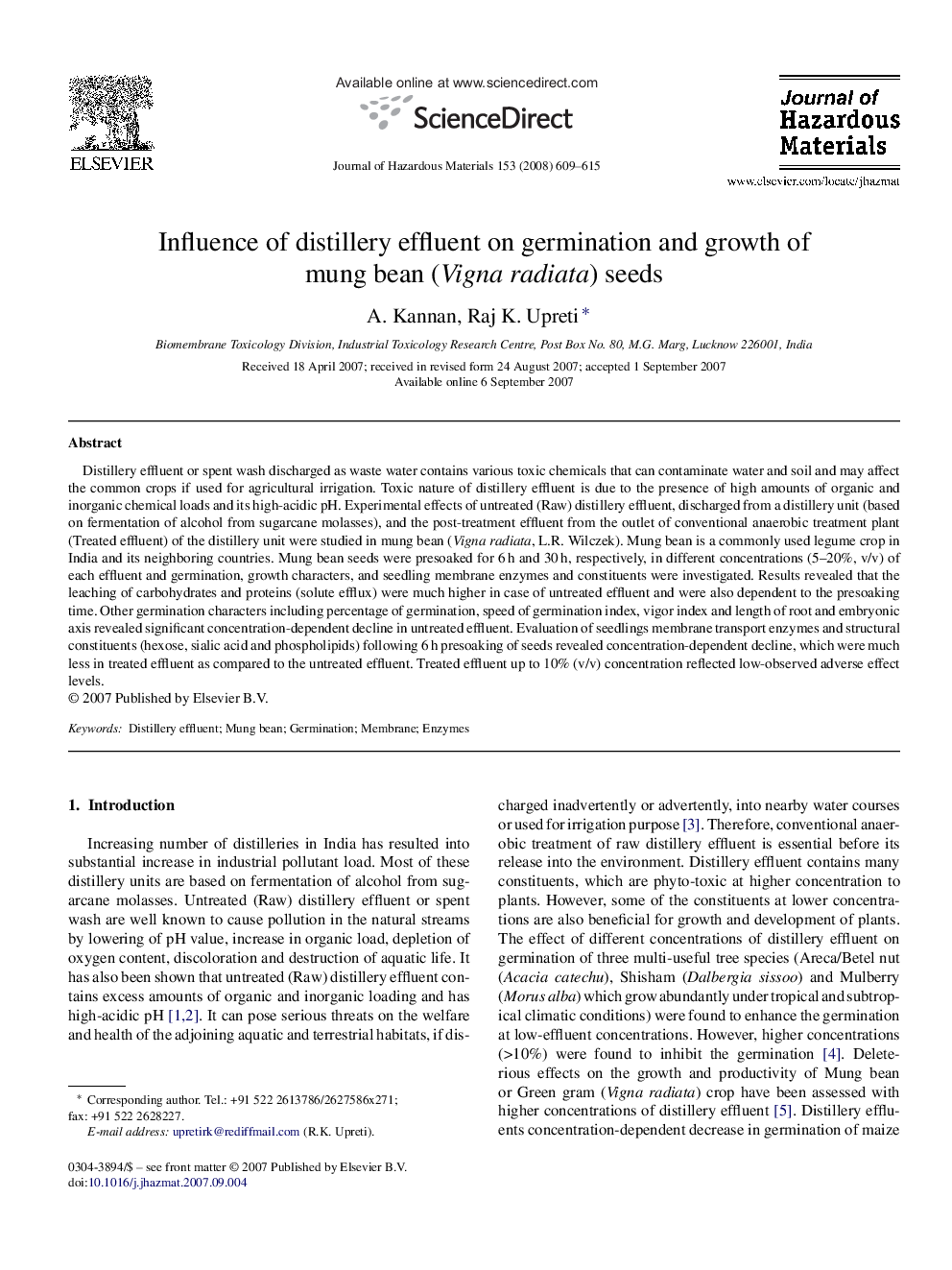| Article ID | Journal | Published Year | Pages | File Type |
|---|---|---|---|---|
| 583149 | Journal of Hazardous Materials | 2008 | 7 Pages |
Abstract
Distillery effluent or spent wash discharged as waste water contains various toxic chemicals that can contaminate water and soil and may affect the common crops if used for agricultural irrigation. Toxic nature of distillery effluent is due to the presence of high amounts of organic and inorganic chemical loads and its high-acidic pH. Experimental effects of untreated (Raw) distillery effluent, discharged from a distillery unit (based on fermentation of alcohol from sugarcane molasses), and the post-treatment effluent from the outlet of conventional anaerobic treatment plant (Treated effluent) of the distillery unit were studied in mung bean (Vigna radiata, L.R. Wilczek). Mung bean is a commonly used legume crop in India and its neighboring countries. Mung bean seeds were presoaked for 6Â h and 30Â h, respectively, in different concentrations (5-20%, v/v) of each effluent and germination, growth characters, and seedling membrane enzymes and constituents were investigated. Results revealed that the leaching of carbohydrates and proteins (solute efflux) were much higher in case of untreated effluent and were also dependent to the presoaking time. Other germination characters including percentage of germination, speed of germination index, vigor index and length of root and embryonic axis revealed significant concentration-dependent decline in untreated effluent. Evaluation of seedlings membrane transport enzymes and structural constituents (hexose, sialic acid and phospholipids) following 6Â h presoaking of seeds revealed concentration-dependent decline, which were much less in treated effluent as compared to the untreated effluent. Treated effluent up to 10% (v/v) concentration reflected low-observed adverse effect levels.
Related Topics
Physical Sciences and Engineering
Chemical Engineering
Chemical Health and Safety
Authors
A. Kannan, Raj K. Upreti,
